How to make a warm floor: a comparative overview of options and technologies for their installation
The underfloor heating system has long been no wonder and is becoming increasingly popular. It is used both simultaneously with the radiator heating system, and separately. The question of how to make a warm floor sounds quite often and this is not accidental. Let's see what advantages and disadvantages each of the systems has.
Unlike traditional options, a warm floor has a number of advantages that have earned him popularity:
- Since the heating element is mounted on the floor, the optimal distribution of warm air in the room occurs: it is warmer near the floor, a little cooler at the level of the head, which contributes to good health.
- Thermal energy is saved (from 20 to 50%), especially in houses with high ceilings, because the "excess" air above is not heated.
- Heat is better perceived, as it is transmitted in the form of radiation.
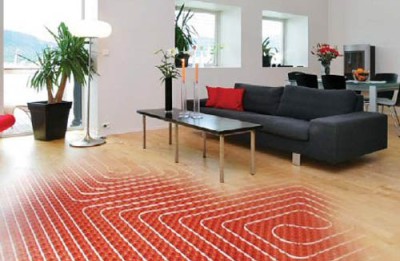
Content
What system options are there?
The most popular today are underfloor heating, made using a heat carrier heating system (most often water), a special power cable or film infrared elements.
Water heated floors
The essence of the design of water-heated floors is that between the base and the flooring are placed pipes with a coolant circulating through them, which, most often, is water. Since such a system does not overheat, they install it under almost any floor covering, including parquet.
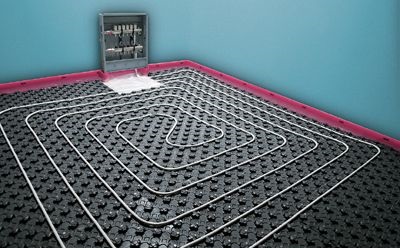
The disadvantages include the relatively low temperature of the system, and therefore, it is not suitable as the main method of heating in a cold climate, and the complexity of installation. Use them most often in private homes.
Electric cable underfloor heating
Heating elements in such warm floors are special cables with multilayer insulation. When electric current passes through them, they heat up and then give off heat to the floor.
Apply resistive and self-regulating cables for installation of a heat-insulated floor. Among resistive ones, preference is given to two-core ones, since single-core ones, according to the results of some studies, are the cause of electromagnetic radiation, which does not affect human health in the best way. Self-regulating wires are deprived of such shortcomings, which, moreover, are more reliable, since they are insured against overheating due to design features.
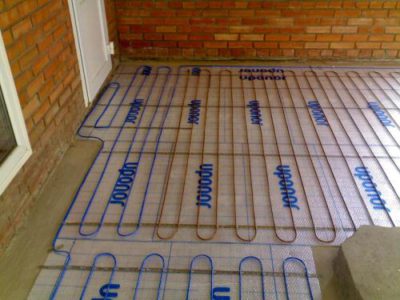
Can't choose the right type of underfloor heating? We will help to determine our comparative review of the various options:https://floor.expertexpro.com/en/tepliy-pol/kakoj-teplyj-pol-luchshe.html.
Infrared underfloor heating
Infrared heating floors are a novelty available in all respects in the heating system market. Their main element is a thin flexible film with a special graphite coating and heating elements (electrodes). When electric current interacts with the coating, infrared waves are emitted. This type of heating is much cheaper than the previous ones, much easier to install and more economical, although the heating area is approaching the maximum.

Indisputable amenities include the fact that installation can be carried out on their own and under any floor covering: linoleum, laminate, carpet, etc. In addition, a number of studies have shown the benefits of infrared radiation for the human body.
Features of the installation
Having learned how much it will cost to make a warm floor, many people think about how to do this work on their own. There is a rational grain in this endeavor, but in reality one will have to face quite difficult technical tasks that will require both knowledge and practical skills. Due to technological differences between different types of underfloor heating, their installation is also different. We offer to understand the features of arranging a warm floor in each case.
Any of the above systems will consist of heating elements, temperature sensors and temperature controllers. Installation is more convenient to carry out either immediately during the construction of a house, or during major repairs.
Cable Option
As mentioned above, different types of cables serve as a heating element in this system. They are laid either in a screed or in a layer of tile glue, if a cable fastened with a special mesh is used. Installation is carried out in the following sequence:
- At the initial stage, a cable laying diagram is drawn up and the location of the sensor, thermostat, and the location of the connection of the warm floor are determined.
- Further, thermal insulation with a reflector is mounted on the base.
- Then, according to the scheme, cables are laid and a thermal control system is mounted, which will protect the system from overheating.
- After that, the floor is filled with cement mortar. The main requirement at this stage is to avoid the formation of voids.
- After 30 days (no less) after screed, the system is checked for performance.
You can find out more about how to independently mount various types of underfloor heating in the material:https://floor.expertexpro.com/en/tepliy-pol/montazh-teplogo-pola-svoimi-rukami-video.html.

Installation of infrared film floor
Installation of this system is perhaps the best option for those who do not know how to make a wooden floor warm, although for concrete floors this is also an excellent solution. It is captivating that on top of it you can lay those types of floor coverings that you like, without limiting your imagination. And the best part is that even a person who is not very experienced in repair matters can handle the installation.
The main stages of work:
- Dismantling the existing flooring and preparing the base. In case of serious surface defects, it is better to make a screed and wait for it to dry completely.
- Next, a film with heating elements is laid and a temperature regulator and a sensor are connected.
- The next step is to check the system’s performance and troubleshoot if it occurs.
- After checking, the thermal elements are closed with a protective film (dry installation) or filled with a solution (wet). When pouring, you must wait a month until it dries completely.
- The final stage is the installation of flooring, according to technology.
This is just a brief description of the process, much more information will be provided by a specialist consultation, if this is not possible, it will be useful to watch the video below:
Electric underfloor heating can be done not only in the apartment, but also on the balcony or loggia. Learn about the options for such systems from the article:https://floor.expertexpro.com/en/tepliy-pol/teplyj-pol-na-balkone.html.
Floor heating system
This option of a warm floor, although it impresses with its practicality and economy, is not very common in apartments, since the coolant (hot water) is taken from central water heating pipes, which can negatively affect the temperature of radiators. In addition, this type of underfloor heating is quite laborious in terms of installation, requires professional skills and serious material costs. Another small minus, which can also play a role - when performing the screed, up to 10 cm of the height of the room is hidden.
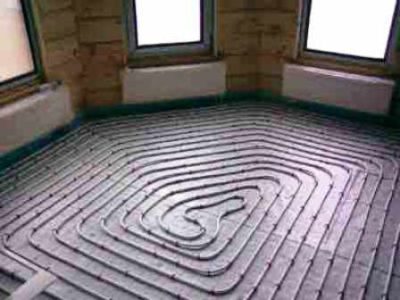
If nevertheless you are interested in how to carry out all the work, then we will list the main stages:
- Start with installing a polypropylene riser if replacement has not been completed before.
- Next, a pipe wiring diagram is drawn up.
- After this, another important point is the laying of a special reliable waterproofing, the strips of which are better to overlap, and the joints are connected extremely tightly.
- Next, a rough screed is made, the level of which should be approximately 5 cm below the expected level of the finished floor, and allowed to dry.
- The next stage is a foil insulation, the joints of which need to be glued with aluminum tape.
- And finally, installation polypropylene pipe according to the scheme, connecting it to the supply and return risers through a control valve.
- Checking the system for leaks. Then the water needs to be drained.
- Perform the final screed, which should be perfectly flat. Let it dry and acquire the necessary strength.
In custody
We conducted a short review of the most popular options for underfloor heating, the principles of their work, advantages and disadvantages. We figured out how to carry out installation work correctly, observing the necessary technology.

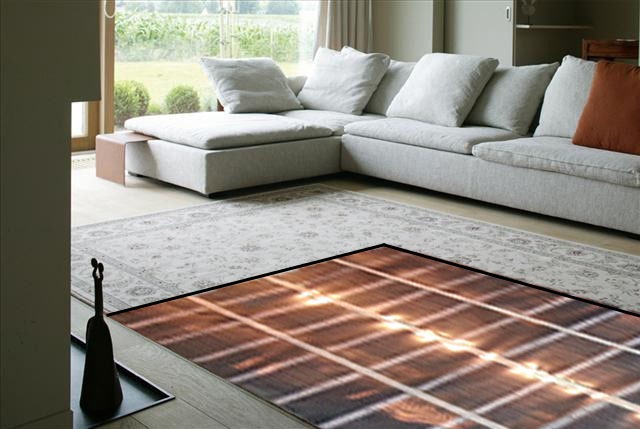
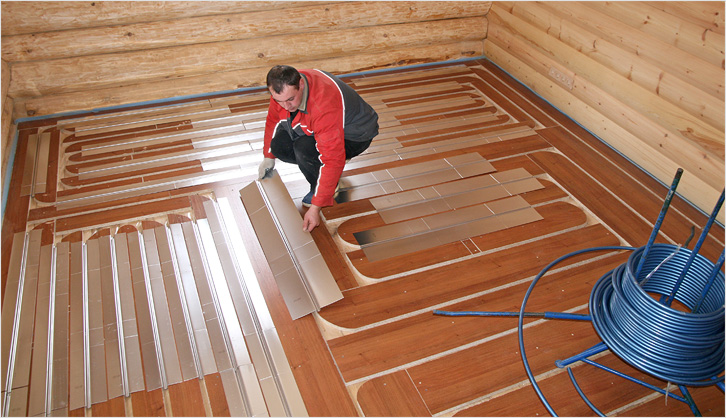
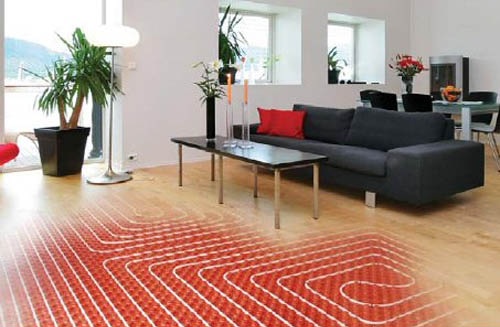
3 comments